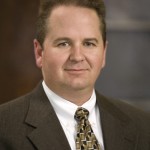
Photo: PHOTO-1-Big-WEB3-1024×679
Can smart grids deliver beyond the hype?
01 September 2012
by Richard Forster
As US cities race ahead to implement smart grids before federal grants dry up, Jonathan Andrews asks what smart grids can actually do for cities and whether they are living up to expectations
Smart grid industry experts still find it difficult to describe what exactly a smart grid is. Currently most grids date back to the 1890s and are powered mainly by fossil fuel-backed generating stations that consist of networks, substations, transformers, wires and switches. With traditional grids, utility companies would have to send workers out to gather much of the data needed to provide electricity to the grid because they weren’t automated or computerised.
“Much in the same way that a smartphone these days means a phone with a computer in it, a smart grid means computerising the electric utility grid,” says a spokesperson from the US Department of Energy. “It includes adding two-way digital communication technology to devices associated with the grid. Each device on the network can be given sensors to gather data, plus two-way digital communication between the device in the field and the utility’s network operations centre.”
Benefits of a smart grid include fewer and shorter power outages, reduced peak demand, and increased integration of large-scale renewable energy systems–including customer-owned power generation systems–leading to enhanced efficiencies and savings for customers.
In 2009, US President Obama signed the American Recovery and Reinvestment Act in a bid to both provide a stimulus boost to ageing infrastructure and to build up the country’s bank of ‘green’ collar jobs. Funds of up to US$4.5 billion for smart electricity grids were announced which would be matched by investments from the private sector, utilities, NGOs and municipal governments.
A report by Innovation Observatory, from February 2011, states that the US, as a result of this stimulus, will dominate global capital expenditure, spending up to US$60 billion on smart grid infrastructure by 2030. China, India and Brazil were included in the top ten countries investing in smart grids, and are closely watching developments in the US.
Despite these enormous sums of money, those in the industry believe that this may have led the smart grid industry to have been too hasty in its rollout.
“A lot of expectations and desires got created in the hype of smart grids that was generated in late 2009,” says Michael Carlson, General Manager for Smart Grid Solutions for GE’s Digital Energy Business. “Now the industry, both the utilities and the solution providers, like GE, are finding the need to come back in to clarify things.”
Community support is a key
One of the first smart grid projects was in Boulder and it provides a sobering example of when technology fails to match customer expectations. Boulder, a city of just under 100,000 people nestled in the foothills of the Rocky Mountains, lies forty kilometres northwest of Denver, Colorado. The university city is a hub for clean energy start ups and research, and in 2006 was the first US city to implement its own carbon tax to achieve the Kyoto Resolution, which it adopted in 2002.
In 2008, a demonstration smart grid, called SmartGridCity and deemed by Xcel, Boulder’s privately-owned utility, as the world’s first smart grid, was initiated in the city to test and evaluate the potential of integrating the emergent technologies.
By the time of its launch, in 2009, the project had automated three of four distribution substations, four computer-monitored power feeders, and another 23 feeders–used to watch for voltage irregularities. About 320 kilometres of fibre optic cable were laid for communications, 4,600 residential and small business transformers were installed, and by 2011, Xcel had connected 24,000 smart meters in homes and businesses.
Xcel cites in public filings that all of this has greatly reduced the number of ‘customer minutes out’ by 28,000 minutes annually as well as reducing outage durations by 382,000 minutes annually. SmartGridCity also provided the platform for a study on plug-in electric vehicles and customer electricity use and has aided the utility to expand a Home Energy Management pilot programme.
Although all are recognised as substantial achievements, they did, however, come at a price. Questions arose about privacy issues relating to smart meters and the health implications stemming from their wireless transmitters, leaving many citizens feeling misinformed and let down. Costs also blew out from an initial US$15 million to US$45 million, which Xcel has sought to recover through an increase in customer rates, angering consumers further.
“That’s probably where we’ve had the biggest challenge, in managing customer expectations going into this and ensuring that we consistently communicate with them around that,” says Jonathan Adelman, Director of Retail Market Strategy at Xcel.

Xcel says that at the time of installing the smart meters the health and privacy concerns weren’t raised. “We had very little push back on either of those topics,” says Michael Lamb, Xcel’s Managing Director of Business Systems and Assistant CIO. “Through the development, we were digging up streets and installing meters in customers’ homes, so there was a lot of customer interaction, but through that action there was very little dialogue regarding privacy or health issues. That’s only been raised more recently.”
Cost blow outs and the utility not living up to consumers’ perceived expectations regarding a clean energy mix, reached a crescendo in a vote held last November when voters narrowly passed a law to allow Boulder to municipalise the utility.
“We began discussing a new type of partnership with Xcel several years ago, but as a vertically integrated utility, they are beholden to their shareholders,” says Jonathan Koehn, Regional Sustainability Coordinator in Community Planning and Sustainability at the City of Boulder. “The vote last November was intended to give the city the authority to determine the technical, legal and financial feasibility of creating our own not-for-profit electric utility that can tap the wholesale power market and potentially drive innovation while offering a much cleaner energy portfolio than Xcel.”
According to Koehn, the smart grid was one example that really illuminated the fact that Boulder was another community of ratepayers with little say over how specific utility programmes are implemented.
Xcel, however, is keen to separate the vote from the launch of SmartGridCity and says that the municipalisation vote is something that Boulder had been looking at since the 1960s. “We are kind of paving a new road with this,” says Michelle Aguayo, spokesperson for Xcel. “A lot of communities look at municipalisation and they look at it for specific issues, whether its reliability, or cost. These are issues that we didn’t really have with Boulder. This is a new road and we’re really not sure where it goes from here.”
The public utility option
In comparison to Boulder’s stalled project, Naperville, Illinois is quietly progressing with its own publicly held, and similarly sized, smart grid. Beginning in 2009 the Naperville Smart Grid Initiative was launched for US$22 million, with half coming from a matching federal grant.
The utility’s US$300 million network deploys a continuous improvement model encompassing distribution and substation automation, digital metering infrastructure and a secure, robust fibre optic network. It announced in May, that since January, 28,000 smart meters had been installed¬ covering more than half of the city’s total 57,000 business and residential customers.

“All of this will help us improve the efficiency of the network,” says Mark Curran, Director of Public Utilities-Electric, Naperville City Council. “It helps us in how we plan for capital improvement, where we need to make the major expenses for the upgrade, but also it gives us the chance to empower the customer to allow them to make good decisions about their energy use, how they use it and when they use it.”
The city has also been keenly aware of ensuring community involvement providing them with up-to-date information and holding numerous open house days where the technology was explained on a hands on basis, and through the city’s website and media outlets.
A customer bill of rights was created, and also a privacy and efficacy handbook that states what the city is doing to protect the privacy of each consumer’s data. Yet, as Curran concedes: “There is still a small group, who just don’t want it at all. We are excited however as we are launching the e-portal later in the year, where people can actually look online and see how they use the power from the previous day, and compare it to previous years as time goes by. They’ll have this information at their fingertips and that will be very useful. We keep stressing how much that type of data is going to help the most typical resident.”
Private or publicly-owned smart grid?
The seemingly smoother experience in Naperville begs the question: is a publically-owned smart grid the way forward? Although Curran is proud of Naperville’s achievements he does admit that, compared to the public model, the private model permits revenue raising to make further improvements to the grid.
“In the particular case of Boulder it seemed as though there were a lot of things that went wrong, and that kind of made it look like ‘hey, that smart grid thing isn’t such a good idea after all’ but there are some good cases of big investor-owned utilities in the US that have moved forward,” says Curran.
He cites examples from private utilities in California and Texas, run by Pacific Gas and Electric and Oncor respectively.
“As a public utility, we are a cost-service based on our rates, we don’t try to make a profit, and we have of course to answer to our mayors and councils on the local level,” Curran adds. “With the investor owned utility it’s a little different as they have shareholders who they are accountable to, to make a profit.”
Costs
Once the federal grants dry up, questions abound as to whether or not people will still be interested in smart grids, and if they will still be feasible for ‘go-it-alone cities’ that don’t want to be left behind with a ‘dumb grid’.
Michael Carlson from GE says: “Stimulus funding did a good thing because it said ‘Hey, we’ll help you take a risk’ and with the commitments from that, you get one level of participation. Now, that level of stimulus funding isn’t a driver as it is the actual utility and consumer lobbies that are driving it. But you get another validation point as there is a commitment to these programmes.”
GE has positioned itself to offer an integrated grid modernisation solution designed for small to mid-sized utilities, both public and private. GE says it gives the smaller, or medium-sized utility the opportunity to play in a space traditionally taken by larger utilities, and helps in deploying grid modernisation technologies and to accessing advanced capabilities while reducing or eliminating the upfront costs.
According to Carlson, the costs associated with the technology have fallen dramatically as the pilot projects test and evaluate the best appliances and software to move forward.
“The cost of it in the late 1990s and even up until 2009 was prohibitive, and the reliability of it was sketchy,” says GE’s Carlson. “Now you can get communication from a wireless device and it’s easy to deploy. The lower cost infrastructure of wireless technologies has just exploded the capability and reasonable capability of putting in solutions that start to interconnect all these moving pieces.”
The future of smart grids
Despite several setbacks, which authorities agree are all part of an emergent industry, the cost of smart grids are well worth the initial teething problems, and are the future, not just in the US or the developed world, but also in those cities racing to become modernised.
“A smart grid will be more economical than a non-smart grid and the analogy I will use is in developing poor countries, you don’t have phone systems that are wired, they are all wireless, as they are more economical,” says Michael Lamb from Xcel. “You’ll find certain components of a more connected grid, that are simply more economical than the more traditional components.”
There is even concern that the smart grid could become too successful whereby demand actually increases. Ozzie Zehner, Energy Researcher, from the University of California, Berkeley, and author of upcoming book Green Illusions explains: “Essentially, it can be represented by the Jevons paradox: Greater grid efficiency can lead to less waste and more nimble energy transmission. This in turn could lead to increased demand and eventually overloaded grids. The benefits of smarter grids could be completely wiped out by unintended consequences, particularly rebound effects, unless we are vigilant about creating the right contexts globally.”
All in the sector seem to agree that the biggest challenge, and key to the success of a smart grid, has been educating the consumer and continually informing them.
“The big thing is to really continue with the communication and education with the public, I think it’s something that is going to evolve over the next few years,” says Naperville’s Curran. “There have been lots of pros and cons, but from a utility viewpoint it’s good for us to run it for the consumers. I think it’s good from an energy standpoint in the US and across the world to control this precious resource.”











